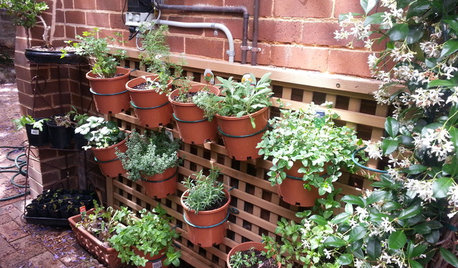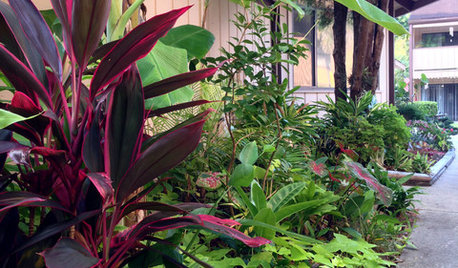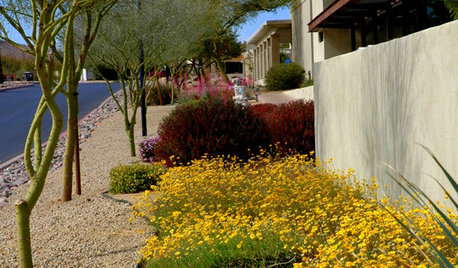This will never work! soil temps, CSU
digit
13 years ago
Related Stories

GARDENING GUIDESGreat Design Plant: Try Blue Bells for Blooms in Dry Soil
This shrub’s violet-blue flowers and silvery foliage brighten low-water gardens all year long
Full Story
FARM YOUR YARD14 Crazy Places to Grow Edibles
Some Houzzers may lack ground for gardening, but they’re never short on imagination
Full Story
GARDENING GUIDESGarden Myths to Debunk as You Dig This Fall and Rest Over Winter
Termites hate wood mulch, don’t amend soil for trees, avoid gravel in planters — and more nuggets of garden wisdom
Full Story
GARDENING GUIDESNew Ways to Think About All That Mulch in the Garden
Before you go making a mountain out of a mulch hill, learn the facts about what your plants and soil really want
Full Story
GROUND COVERSGround Force: 10 Top Ground Covers for Your Garden
Protect your soil from weeds and drought this summer with a living mulch of ground covers
Full Story
SPRING GARDENINGHow to Grow a Rose Garden in Pots
Everything can come up roses, even without a plot of soil in sight. This step-by-step guide to growing roses in containers shows you how
Full Story
GARDENING GUIDESA Mom, a Garden and a Gift for the Neighbors
Gardening can be therapeutic in unexpected ways. See how one gardener found peace and purpose in a patch of Florida soil
Full Story
GARDENING GUIDESGreat Native Plant: Angelita Daisy
Want a pretty perennial that can handle high and low temps with little fuss? Versatile angelita daisy is your workhorse
Full Story
GARDENING FOR BUTTERFLIESGardening for the Bees, and Why It’s a Good Thing
When you discover how hard bees work for our food supply, you may never garden without them in mind again
Full Story
FEEL-GOOD HOME21 Ways to Waste Less at Home
Whether it's herbs rotting in the fridge or clothes that never get worn, most of us waste too much. Here are ways to make a change
Full Story






laura_42
colokid
Related Professionals
Grand Haven Landscape Architects & Landscape Designers · Wixom Landscape Architects & Landscape Designers · Lakeland Landscape Contractors · Cudahy Landscape Contractors · Holland Landscape Contractors · La Verne Landscape Contractors · Matteson Landscape Contractors · Norwalk Landscape Contractors · Rancho Santa Margarita Landscape Contractors · Round Lake Landscape Contractors · Shaker Heights Landscape Contractors · The Villages Landscape Contractors · Waipahu Landscape Contractors · Herriman Solar Energy Systems · Swansea Solar Energy SystemsdigitOriginal Author
luckybottom
digitOriginal Author
Skybird - z5, Denver, Colorado
elkwc
jnfr